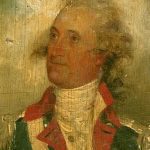Among Charles Town’s first settlers was a decorated military veteran and soldier of fortune named Capt. Florence O’Sullivan, who, on Oct. 8, 1678, claimed two of the first lots laid out on the city’s new peninsula location. Of the 93 souls who disembarked here from the ship Carolina in 1670, perhaps O’Sullivan’s name is the most prominently recalled today, though few people can recount the reason.
The Carolina’s first stop after departing England for the New World in 1699 was Kinsale in Cork County, Ireland, most likely where O’Sullivan joined the voyage. Prior to this journey, O’Sullivan had served in the military and as a deputy to one of the eight Englishmen known as the Lords Proprietors of Carolina, Sir Peter Colleton.
The Proprietors, who were impressed with O’Sullivan’s survival skills in the military, urged his participation in the settling of the new Charles Town colony by promising his 12 servants, 1,900 acres of land, and a job as the colony’s Surveyor General. In his commission, the Proprietors stated, “We [are] assured of the wisdom, prudence, and integrity … of our trusty and well-beloved Florence O’Sullivan.”
As the colony’s first surveyor, O’Sullivan was an early leader of the new colony and was elected to the First Provincial Parliament in 1672. In addition to his lots on the peninsula, he was the first owner of property in what is today’s Mt. Pleasant.

Yet O’Sullivan was unpopular among his fellow colonists, an “ill-natured buggerer of children,” according to a 1670 letter written by colonist Maurice Mathews. Others complained to the Lord’s Proprietors as well. Stephen Bull, the father and grandfather of two influential South Carolina Lt. Governors, wrote that O’Sullivan “doth acte very strangley” and was “a very disscencious (i.e. dissentious) troublesome mann in all p’ticulers,” adding that he was involved in “unjust practices” and his work was “almost triple the rate of other settlements.”
Henry Brayne complained that O’Sullivan “doth by his absurd language abuse the Governor, Councell and Contry and by his rash base dealing he hath caused everie one in the Country almost to be his enimie.”
Furthermore, all three of these colonial letter writers asserted that Capt. O’Sullivan was not a trained nor skilled surveyor and probably exaggerated his credentials when he applied for the job, saying his work was slow and his drawings inaccurate. Indeed, these claims were probably true.
O’Sullivan defended himself in a letter written on Sept. 10, 1670, Lord Anthony Ashley Cooper expressing his frustration with his fellow colonists. He asked Cooper to send him “an able counselor to end controversies amongst us and put us in the right way,” as well as a clergyman.
Soon after, O’Sullivan lost his surveying job, though he kept his position in the Provincial Assembly. In 1674, he was ordered to take charge of a cannon located on an island at the northern entrance to the Charles Town. O’Sullivan’s new post was a vital position of distinction as a lookout protecting the colony from pirates and marauding French and Spanish ships. Should a threat present itself, he, probably working with a small group of subordinates, would fire the large signal cannon alerting colonists of the approach of enemy ships.
The island soon became known as O’Sullivan’s Island and remains so named today, though somewhere along the way, for reasons unknown, the O was dropped from the captain’s name. O’Sullivan never owned property on the island, so one might assume the adoption of his name may have been in recognition of his public service there. No records explaining why or when the island acquired its name exist, though a 1685 act by the provincial government called for the building of “one tight small house upon Sullivand’s Island.”
Capt. O’Sullivan died in the Carolina colony in 1683, 13 years after his arrival. His cause of death or final resting place are unknown. Records indicate he did leave one daughter, Katherine, behind, who inherited his land in Mt. Pleasant’s Old Village. In her bill of sale of those 330 acres to John Barksdale in 1696, she identified herself as the “sole daughter and heries of Florentia O Sullivan,” and described the property as “the last and remaining part of the … lands above granted to my said father, and which he dyed possessed of.”
With that, Florence O’Sullivan faded into history. Yet today, his is one of the few original colonists’ names that have survived in common use in the name of Sullivan’s Island.



